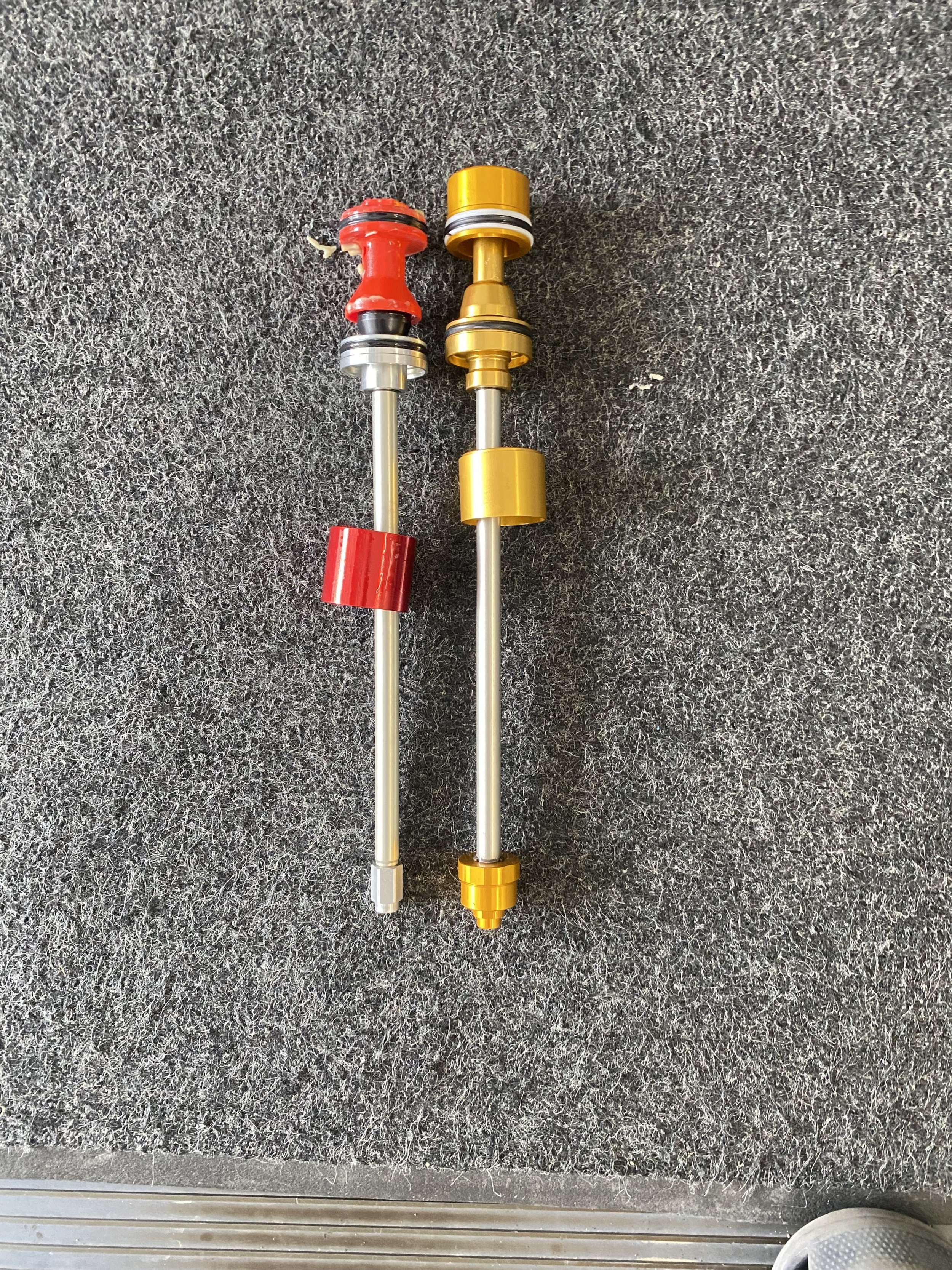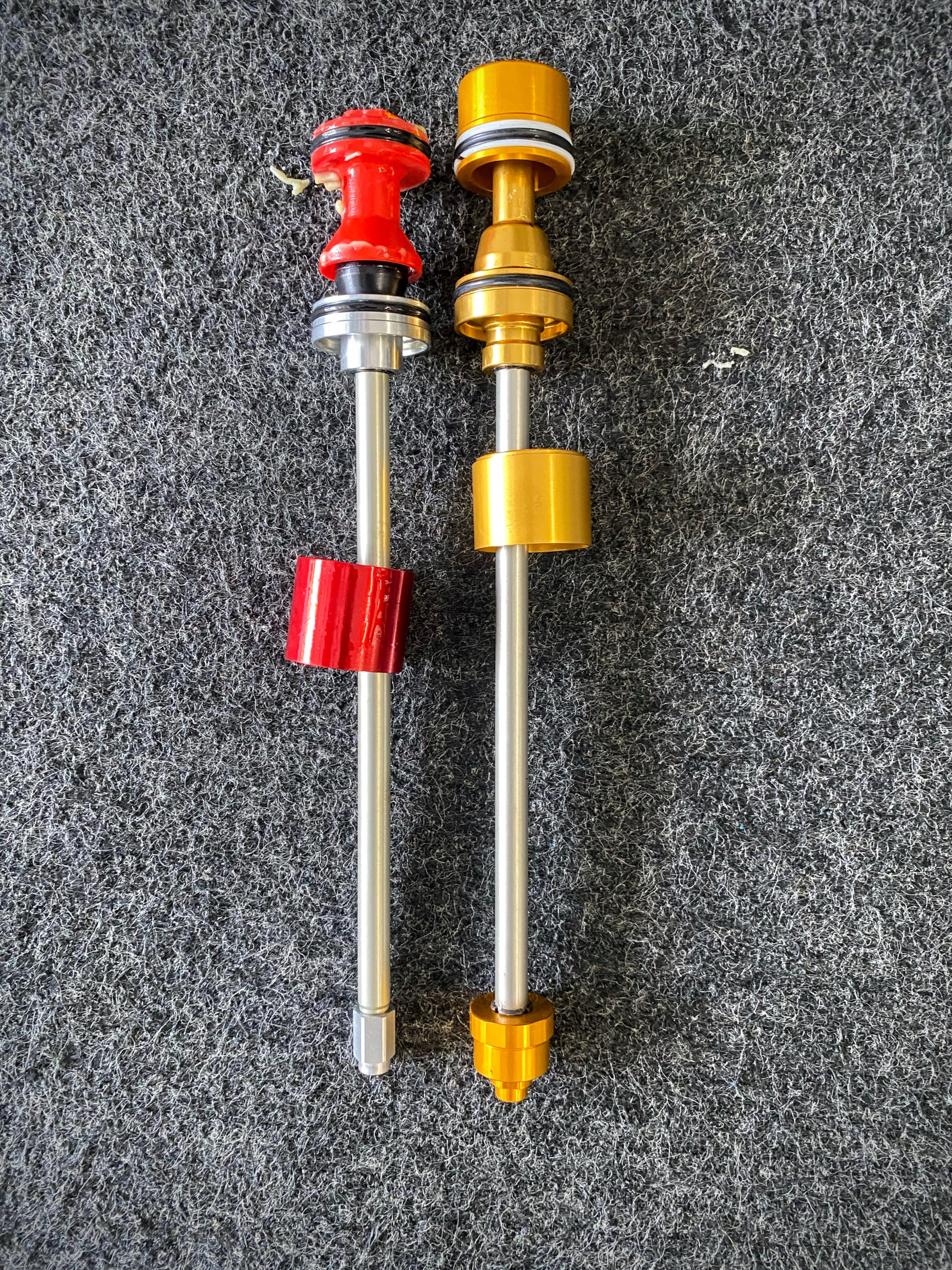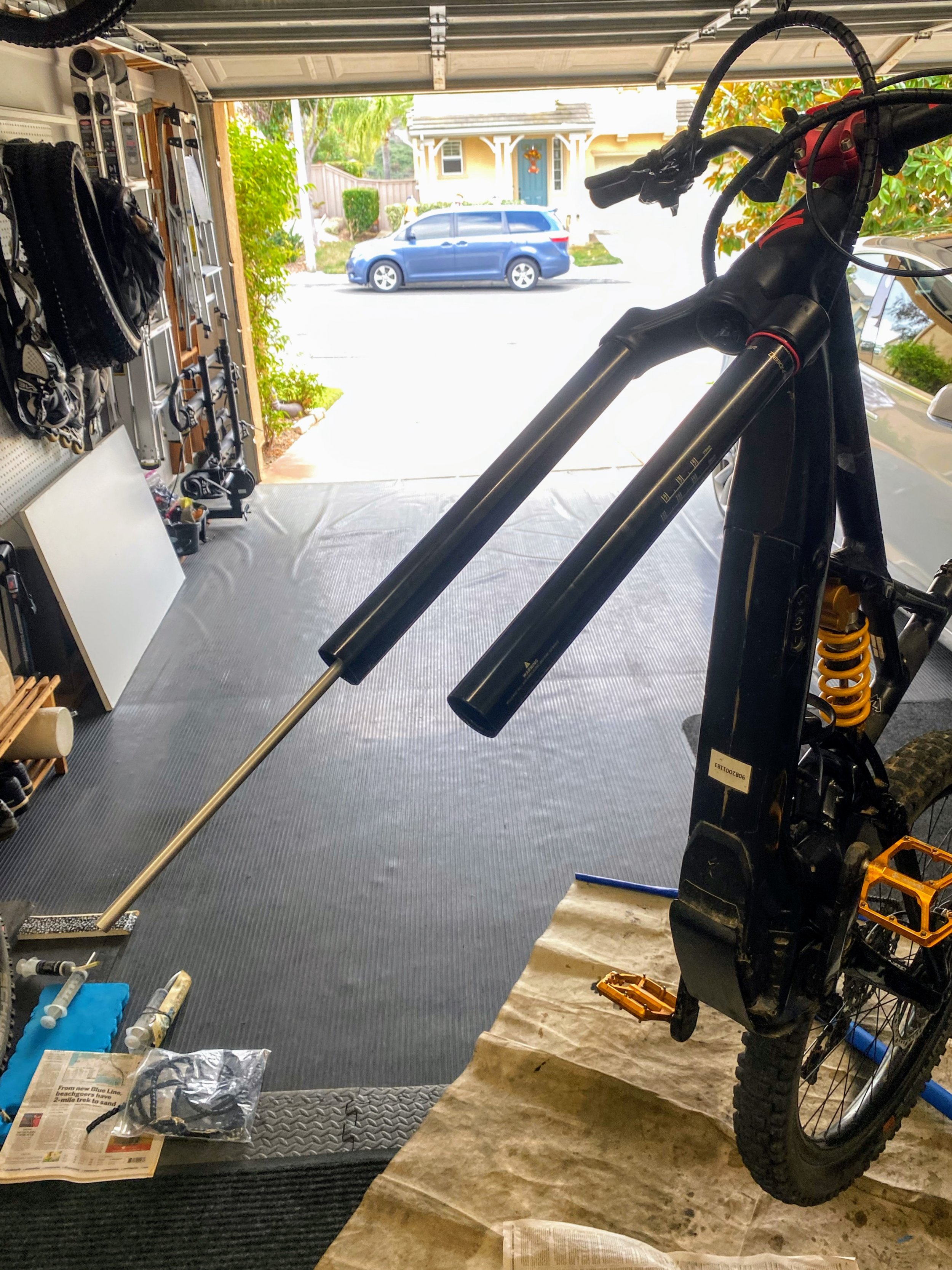No matter where you start (higher or lower pressure) try the bracketing method in order to get the desired performance. For example start at 80 and see if you are happy. If it is too hard try 70. If it is still too hard try 60. Then if 60 is too soft try 65. If 65 is still too soft then try 67.5 which would probably be the desired pressure.
Same method could be applied to rebound, damping, spacers etc but make sure to start first with the psi (with everything else fully open).
Same method could be applied to rebound, damping, spacers etc but make sure to start first with the psi (with everything else fully open).



